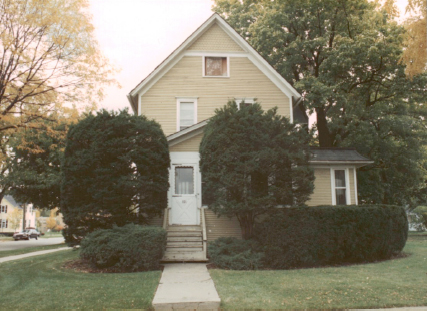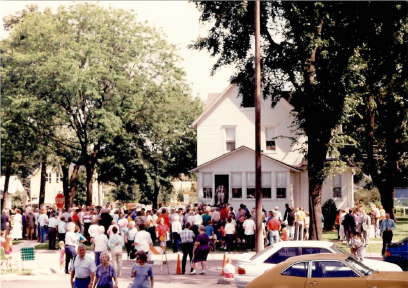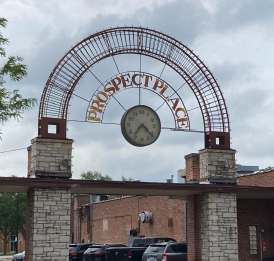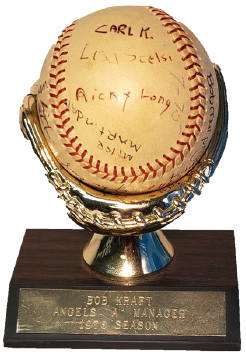by Emily Dattilo
Before 101 S. Maple Street was a museum, it was a home. Dietrich and Lena Friedrichs built the house at 101 S. Maple Street in 1906, and five years later their daughter Bessie was born. Collectively the Friedrichs family spent 60 years in this beautiful house.

After Dietrich and Lena’s passing, Bessie decided to move into a home of her own with her husband, Charles Barnes. She sold 101 S. Maple to Richard and Jane Webb in 1966. Just like the Friedrichs family, Richard and Jane adapted the home to meet the needs of modern life and personal preferences.
One of the Webb family’s adaptations involved creating a main floor bathroom out of the pantry adjacent to the kitchen, as suggested in the 1966 real estate listing for the house. The Webbs also repainted the house yellow, as seen in the photo on the left.
In 1975 First Chicago Bank of Mount Prospect purchased 101 S. Maple Street, and the Webbs moved to another home in Mount Prospect. The bank was located across the street, on the corner of S. Maple Street and W. Busse Ave. in what is now the former Chase Bank building. Their original plan for the property was to tear down the home, garage, and carriage house in order to pave a parking lot. Neighbors and the Village of Mount Prospect, however, were strongly opposed to this plan because the space was zoned as a residential area. Instead, First Chicago Bank began renting out 101 S. Maple Street, most likely as a way to get a return on their investment.
One of those tenants was Richard, a young man whose lease lasted from 1982 to 1984. He shared the house with four other young people, all in their late teens and early twenties. During that time Richard occupied the room that is now the Historical Society office, and in July 2021 Historical Society staff found a receipt with his name on it stuffed into that door’s keyhole. One of the most entertaining memories from his time as a resident was when another resident’s cat had kittens. The kittens could be found roaming all over the house!
Richard moved out of town in 1984 and the rest of the tenants moved shortly afterwards. By 1987 the house was empty and once again available for purchase.
First Chicago Bank first approached the Village of Mount Prospect with an offer to sell the house, and the Village then turned to the Mount Prospect Historical Society. The Historical Society was interested in preserving this historic home, and they enthusiastically began an intense fundraising campaign to raise $94,000 in less than a year. First Chicago Bank donated the first $16,000 towards the purchase price. Individuals, businesses, and local organizations contributed the rest of the almost $80,000. Fundraising efforts included door-to-door campaigning, bake sales, breakfasts, and other special events. It was truly a community project!
However, it would take plenty of restoration to bring 101 S. Maple Street back to its former glory.

That meant continued fundraising. The Historical Society formed a Restoration Committee who guided the entire process with thorough research and input from two former residents, Bessie Friedrichs Barnes and Jane Webb. Volunteers spent countless hours researching furnishings and household items appropriate for an early 20th century home. Some of the most significant objects acquired for the museum were those that once belonged to the Friedrichs family. Bessie donated many of these, but others, like the dining room table and chairs and the hall tree in the entryway, were returned by their second owners.
The Mount Prospect Historical Society’s Dietrich Friedrichs House Museum officially opened with a dedication ceremony on September 12, 1992. Crowds of supporters gathered to witness the ribbon-cutting ceremony and celebrate all the hard work and dedication that made the day possible. 30 years later, we’re still sharing Mount Prospect’s history in this beautiful, historic home.

